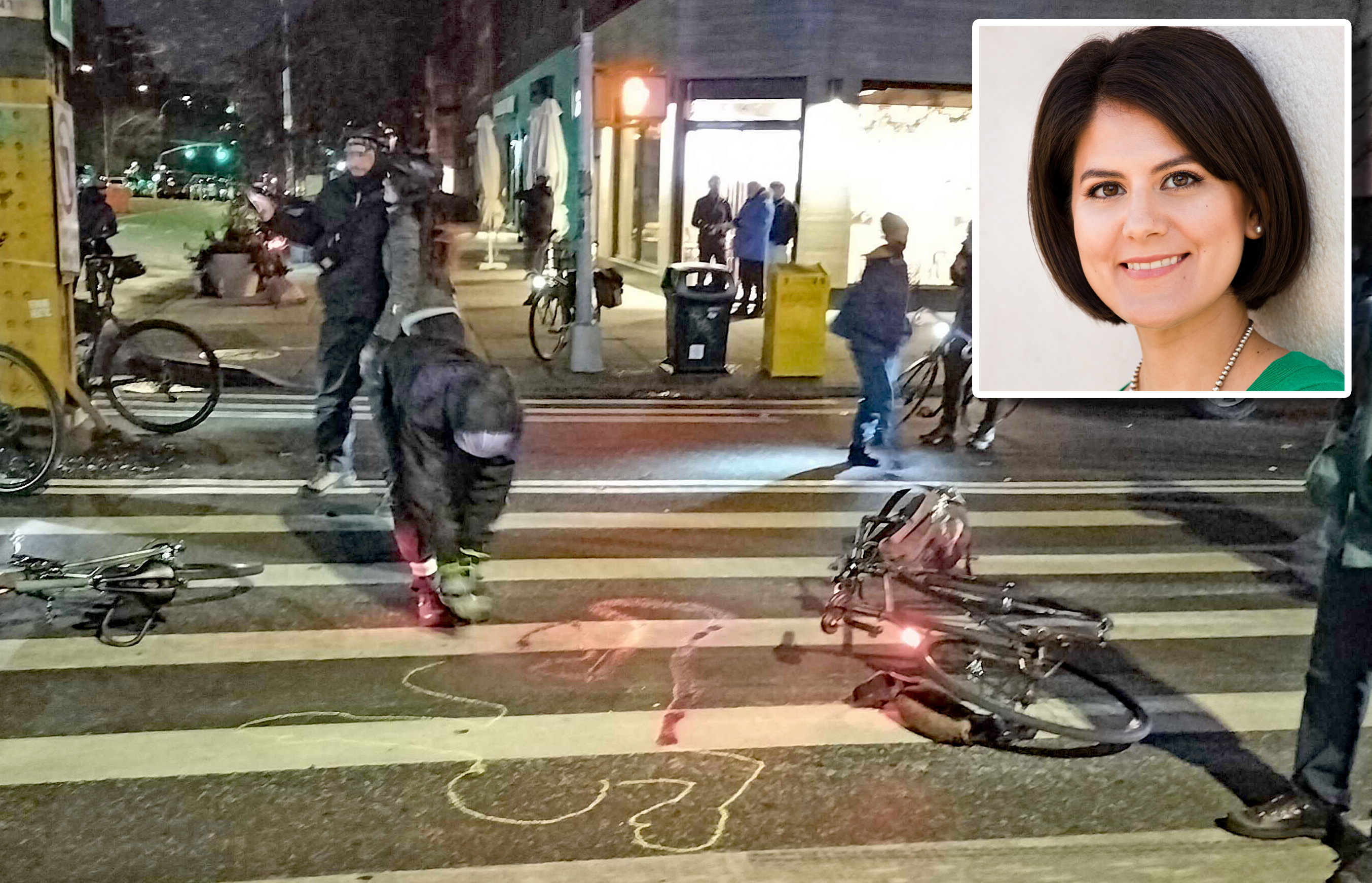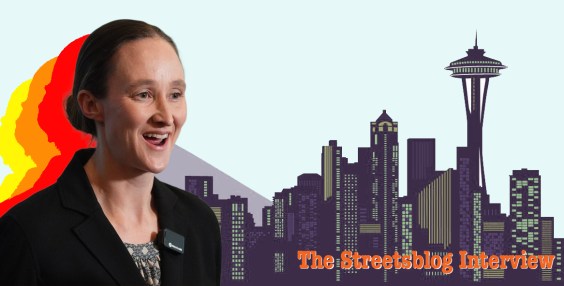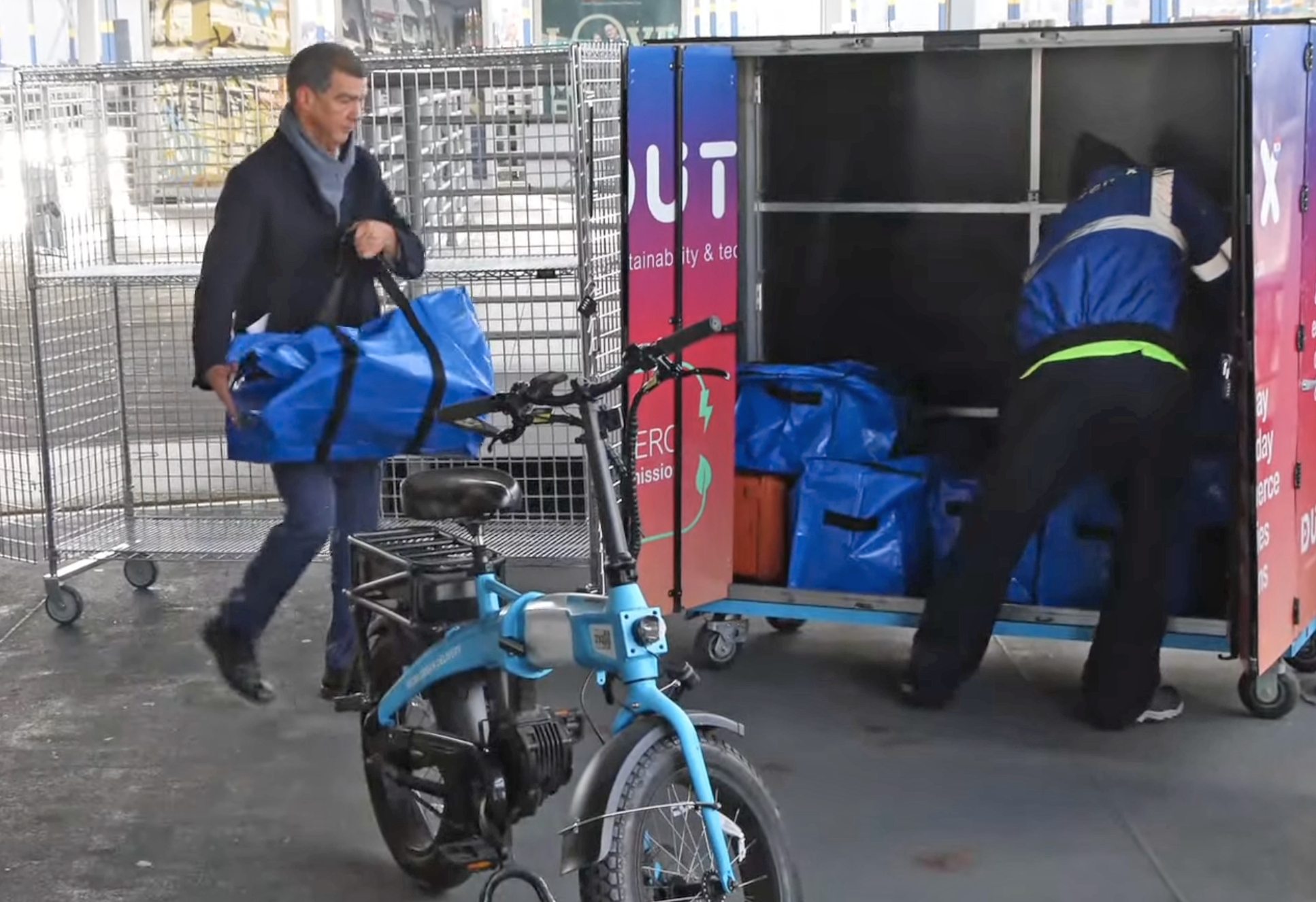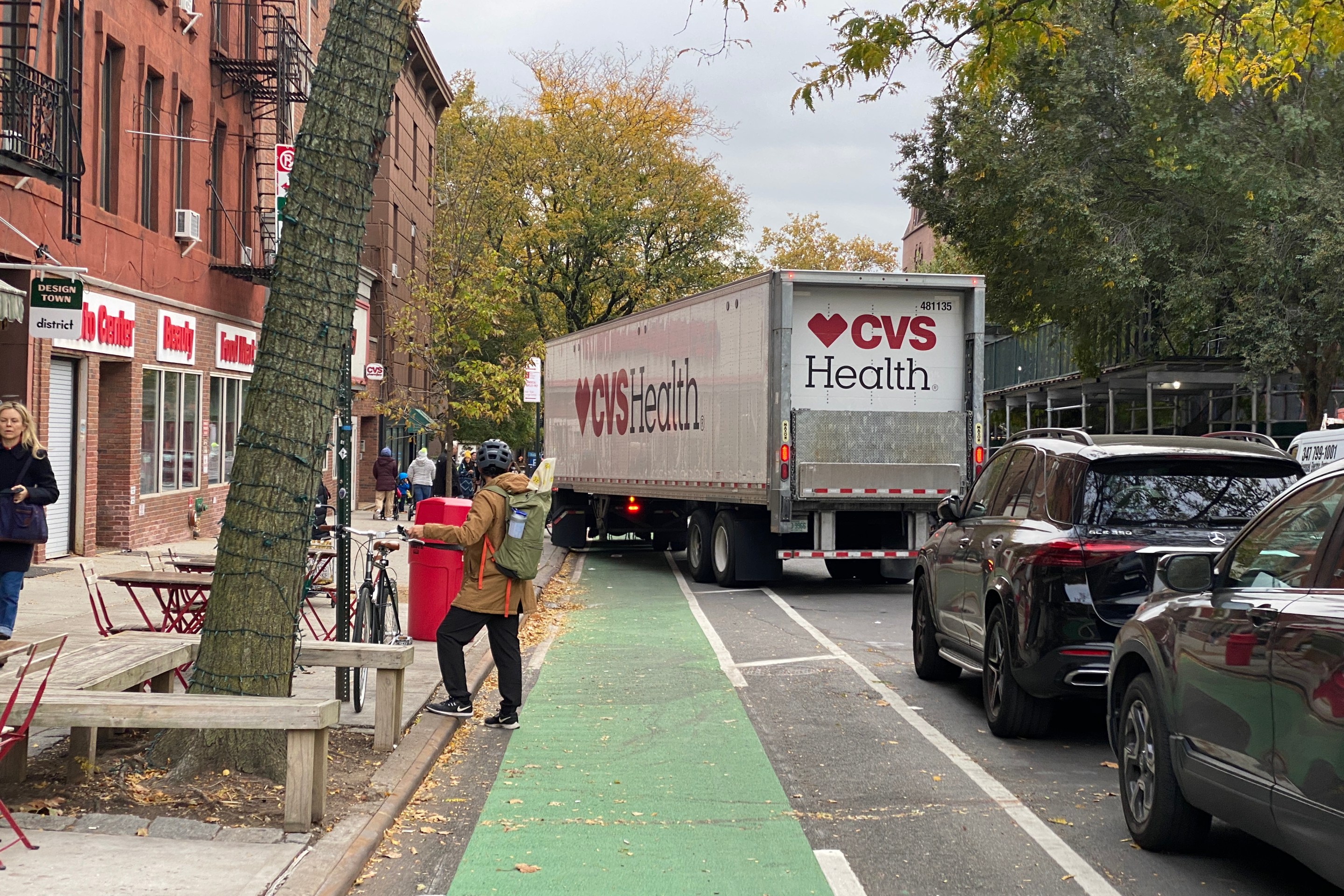
This essay is part of Streetsblog's "Car Harms" series, a package of stories designed to remind policymakers and the public of the hidden costs, dangers, inefficiencies and just plain old sadness that come from building our city around the needs of drivers. Auto-dependency has undermined the joy and beauty of our great urban spaces, and that must change. Click here to read the full series.
And if you are moved to make a small donation to keep series like these going in the future, please click here.
Car brain.
It’s a phrase that conjures an abundance of examples from my daily life. I’m sure the same is true for you. The other morning, as I went to look up directions to an appointment, I was frustrated to see the doctor’s office only listed parking instructions and navigation from the nearest interstate, despite the fact they were served by three different bus routes.
As someone born with a vision impairment that makes me unable to get a driver’s license, it’s easy to notice when driving is assumed to be the norm, and beyond that, assumed to be the only option. But while we most often conceptualize car brain as a misguided belief system, I think it’s more helpful, rather than blaming individuals for being brainwashed by car propaganda, to consider that car brain is perhaps a rational response to car-dependent communities.
Let me explain.
First, we have to understand that car brain isn’t universal. There are a lot of people in the U.S. who can’t drive or don’t have easy access to a vehicle. If you combine everyone who can’t drive because of age or disability, documentation status or license revocation, everyone who can’t afford to drive, and everyone who chooses not to, nationally we make up around 30 percent of the population. In high-poverty areas, both urban and rural, nondrivers are even more represented.
But in a society where disabled and poor people, recent immigrants, and Black and tribal communities largely are excluded from political power, our policies, our budget priorities and our dominant cultural narratives assume everyone with valid mobility needs can and does drive. Nondrivers are also less likely to be able to participate in public life because of transportation access, disability, age and other socio-economic barriers. Even the ways in which we measure transportation access often undercount and undervalue the mobility needs of nondrivers, for instance by ignoring shorter trips, non-commute trips, or by failing to figure out ways to measure trips taken outside of vehicles.
When you pay attention, you start to see evidence of nondrivers everywhere: notice the “desire paths” worn in the grass on the shoulders of arterials without sidewalks, the footprints in the snow across the highway median between the apartment complex and the convenience store, the paratransit shuttle picking up a neighbor, the cyclists on well-worn mountain bikes threading their way along the sidewalk in an industrial park.
The invisibility of nondrivers means that the transportation options available for us are generally pretty dismal, ensuring that anyone who does have the choice to drive figures out a way to make it happen — even if it’s a financial stressor, even if they’d much rather live in a place where they could walk and bike safely. This is particularly evident when you raise kids. Outside of the most walkable and transit rich areas of wealthiest and most dense cities, it’s exceedingly rare in the U.S. for people who have the choice of driving to not start when they become parents.
Not driving or having access to a car as a caregiver means you’re navigating the stress of trying to find room for a stroller on the bus. Or perhaps even worse, the stress of trying to keep a young child entertained and safe at an arterial bus stop, where the traffic noise makes it almost impossible to talk and you need to dodge splashes of sludge puddles from passing cars. Every time you prepare to cross a street, you wonder if the turning cars will stop, or if they hit your kid, if you’ll be blamed for losing grip on their hand. When you consider this reality of navigating most U.S. communities without driving, it’s easier to understand how car brain is perhaps a rational response to car dependency.
My kid rides the school bus to school. Instead of picking up kids in front of their houses, the school district coordinates group pickup locations that are located within a mile of each student’s home, and for elementary students are sited so that students aren’t expected to cross unsafe arterials. For us, it’s about a 10-minute walk that involves cutting through a nearby field. Each morning, the three other students arrive to the stop by car. It makes me sad because I’ve yet to even say as much as a hello to any of the other parents. They stay ensconced in metal and glass, and I walk home, alone, fuming and ruminating. Why does everyone else drive?
Since moving to Seattle seven years ago, I’ve struggled with feeling isolated. It’s not just school drop-offs. I’m the only parent that doesn’t drive to dance practices, to swim lessons, to most birthday parties. Yesterday, I challenged my partner to name another family with school-aged kids we know who get around using primarily the bus. He was stumped.
We live in Seattle because it’s the most transit-rich city in our home state. Between light rail and the bus, you can pretty much get anywhere in the city and the surrounding suburbs. Seatte’s relatively narrow and slow streets mean comparatively low bike and pedestrian deaths. And yet … driving is still so much faster, so much more convenient, that it’s very rare for families with kids who can afford a car not to drive where they need to go for transportation.
This is because car-brain is self-reinforcing. The more people that drive, the less ridership and funding for transit, the more traffic slowing buses, the more aggressive and stressed drivers running red lights and turning through crossing pedestrians. I’ve written how the paradox of school dropoff is a microcosm of the challenge of car-dependent communities: the more that people who have the choice or the privilege of driving are incentivized to drive, the more difficult, less comfortable, and less safe it becomes for people who don’t.
Sure, I could blame it on car brain, but rather than shaming other parents for seeing cars as the only tools for access, it's more productive to understand why they are choosing to drive, and what it would take to change our community so that driving the less rational choice.
It’s got to be faster to take the bus (or at least not three times slower). It’s got to be pleasant to walk places because traffic noise and traffic speeds aren’t deadly and deafening. Sidewalks need to exist and be well maintained. Crossings need to prioritize pedestrian comfort and movement. We need multimodal infrastructure that accommodates cargo and family bikes and trikes. And most importantly of all, we need housing, housing that is affordable to working families, that’s near enough to services and to schools and jobs where the distances we need to travel aren’t navigable only in a private vehicle.
Curing car brain isn’t as simple as a re-education program. Curing car brain necessitates reducing car dependency.






